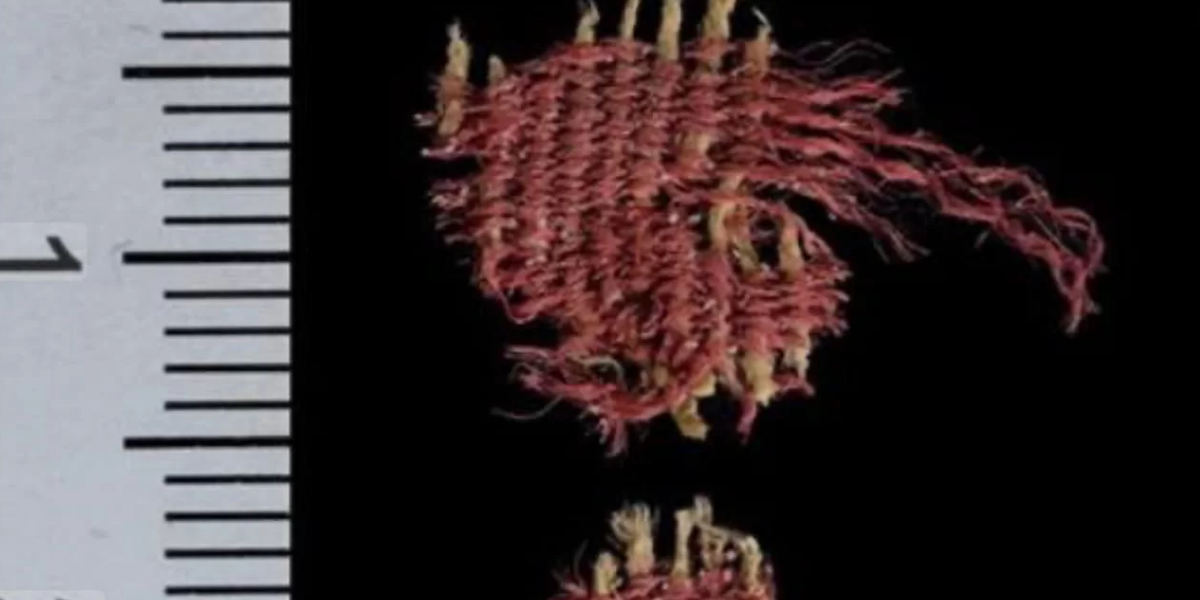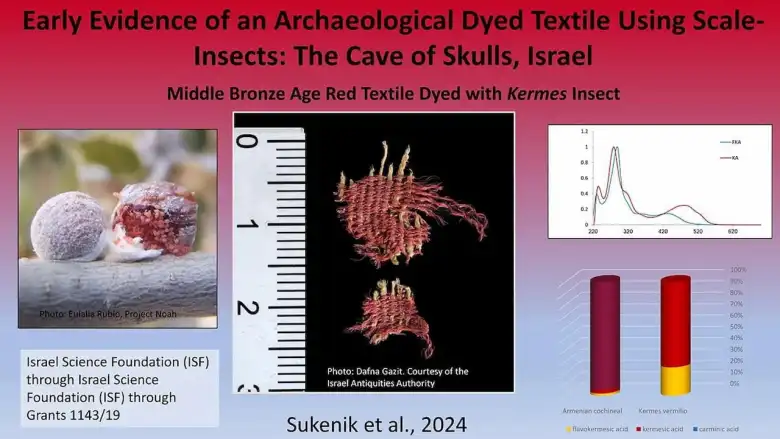
4000-year-old fabric dyed with insect dye discovered in a cave in the Judean Desert
Researchers have discovered fabric dyed with kermes (Kermes vermilio) in the Cave of the Skulls, which bears traces of the Middle Bronze Age.
The piece of red fabric found in the Cave of the Skulls in the Judean Desert was made of linen and wool. Radiocarbon dating dated the fabric to the Middle Bronze Age, specifically between 1954 and 1767 BC. What makes this find unique is the use of red dye, which in ancient times was derived from the luxurious and rare color source of the Kermes vermilioa beetle.
In a study of the discovered textiles, scientists analyzed the dye using High Pressure Liquid Chromatography (HPLC) and identified a unique, red-dyed textile dyed with scale insects.
This technique allowed the presence of the dye to be detected and confirmed that the red dye originated from the scale insect Kermes vermilio, which parasitizes oak trees, specifically Quercus coccifera. Although destructive, this method only needs a small sample, preserving the integrity of the old object.
📣 Our WhatsApp channel is now LIVE! Stay up-to-date with the latest news and updates, just click here to follow us on WhatsApp and never miss a thing!!
Like wooden finds, textiles are rare items in the archaeological record because of their perishable nature and the rapid decay to which they are subjected.
Their preservation under special conditions, such as in caves in the Judean Desert, makes them extremely valuable.

Despite its small size, the detailed study of this textile allows researchers to trace the origin of the red color back to the type of insect used, an important discovery not only for its age, but also for what it reveals about the knowledge and technology of ancient civilizations in the use and application of natural dyes.
Given that using dyes made from scaly insects such as Kermes vermilio was an expensive and labor-intensive process, it is possible that these textiles served as symbols of status and power in prehistoric societies.
In addition to reflecting individual preferences, textile color was used in ancient societies as a system of nonverbal communication about a person’s social and economic status.
The study was published in the Journal of Archaeological Science: Reports.
https://doi.org/10.1016/j.jasrep.2024.104673
Cover Photo: Fabric dyed with kermes. Dafna Gazit / Israel Antiquities Authority
You may also like
- A 1700-year-old statue of Pan unearthed during the excavations at Polyeuktos in İstanbul
- The granary was found in the ancient city of Sebaste, founded by the first Roman emperor Augustus
- Donalar Kale Kapı Rock Tomb or Donalar Rock Tomb
- Theater emerges as works continue in ancient city of Perinthos
- Urartian King Argishti’s bronze shield revealed the name of an unknown country
- The religious center of Lycia, the ancient city of Letoon
- Who were the Luwians?
- A new study brings a fresh perspective on the Anatolian origin of the Indo-European languages
- Perhaps the oldest thermal treatment center in the world, which has been in continuous use for 2000 years -Basilica Therma Roman Bath or King’s Daughter-
- The largest synagogue of the ancient world, located in the ancient city of Sardis, is being restored











Leave a Reply